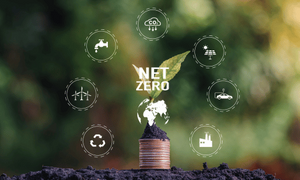Understanding net zero: explaining the climate change strategy

Numerous commitments have been made by governments to achieve net zero emissions in the coming decades. These pledges aim to align with the Paris Agreement's objective of limiting global warming to below 1.5°C. However, a government study found that only 39% of respondents know a fair amount about net zero.
Simply put, net zero is a goal is to fully offset the quantity of greenhouse gases generated by human actions, through the reduction of emissions and the adoption of capturing carbon dioxide from the air.
The concept of net zero entails achieving a state of equilibrium between carbon emissions and carbon absorption.
Countries like India have raised concerns about the implications of achieving net zero emissions. They argue that fairness and equity between developing and developed nations should be prioritised, advocating for the traditional principle of "common but differentiated responsibility" in mitigation efforts. This is why India has set a target to achieve net zero emissions by 2070, emphasising the need for developed nations to take the lead and assist developing countries with the resources and technologies required to meet their mitigation goals.
Read more: What is net zero, anyway? A short history of a monumental concept
